Pick
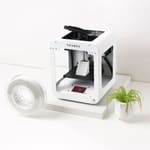

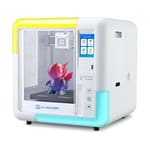

We have our noses pushed right up to the cutting edge of 3D printing here at All3DP, so much so that it’s easy to forget the joyful wonder that 3D printing can inspire. Colorful plastic quickly formed into tangible, holdable things – it’s a toymaking wonderland is what it is.
So, we’re taking a short break from today’s sharp, speed-focused multi-material marvels to see what else is up; let the inner child have a play. We’ve gathered the notable toy-oriented 3D printers pitched at kids and their doting parents and put them to the test (including against the real test – actual children) to sort the best from the rest, considering them against a select couple of “regular” 3D printers.
The ideal 3D printer to keep kids entertained has a relatively short list of boxes to tick: ease of use – while parental supervision will be required, it should be simple enough for the child to understand what is happening; safety, by way of guards and shrouds around the heated components, not to mention the moving mechanics and finger-trap hazards; and fun, because who’d want a toy 3D printer if they’re not much fun to play with? Not us.

Separate from the above, we’re conscious of the price point of these machines. 3D printed toys from such printers are invariably single-material plastics, not the strongest, and certainly, to a degree, disposable. The experience and software are likely where the bulk of the investment goes since the hardware itself will be limited if you compare them to today’s top consumer desktop 3D printers.
With that said, though, there are “regular” consumer 3D printers that are approaching one-click simplicity in their operation, with colorful, community-driven model libraries linked directly to the printers and simple, familiar app experiences that make discovery and printing (excuse the pun) child’s play.
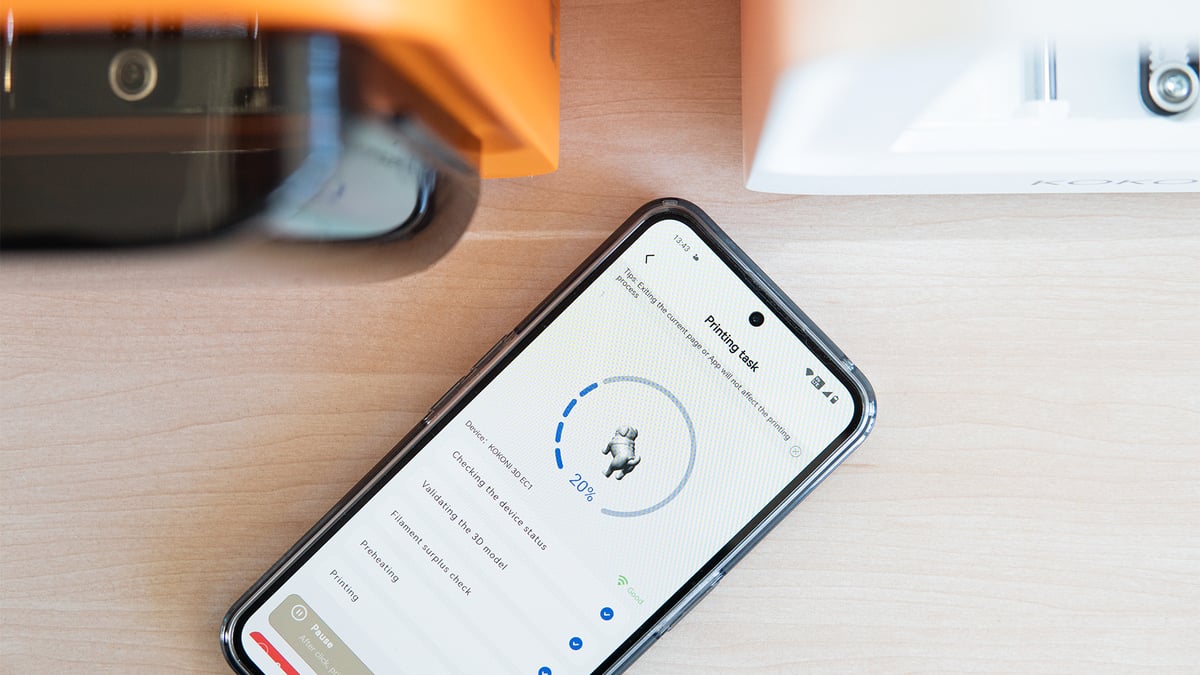
We’ve gathered the printers we think fit the bill and put them through the ultimate challenge: one cynical editor and his six- and four-year-old kids for the ultimate toy-making showdown.
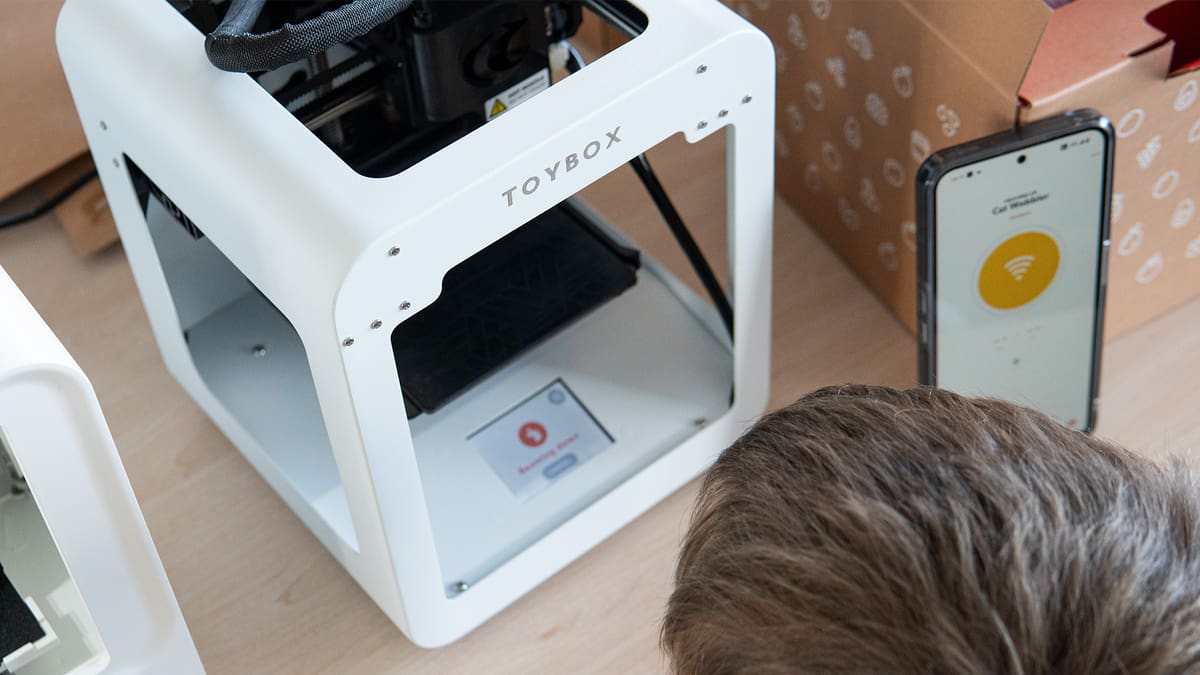
Several years mature and seemingly in a stable position as the go-to name in toy 3D printing, the Toybox is an interesting proposition, bundling a compact and basic (but undeniably sturdy – we’d wager it could survive a tantrum or two) 3D printer with an app-based ecosystem and model library that will 100% sink its hooks into kids and keep them coming back for more.
Critics will point to its premium models and plus subscription as a negative, which we can’t deny is jarring against the near limitless depth offered by open 3D model repositories. But much like the shows and movies your kids stream on the likes of Disney+ or Netflix, it’s not an unfamiliar reality of modern media consumption. There are no ads, and the curation here means everything is possible to print and near-impossible to mess up. It takes the effort of finding or making, for the most part, out of your hands.
The purchase of the printer is enough to give you access to thousands of models and some basic in-app model creation from the get-go.
Additional account currency – “Bolts” – can be bought with real money and used to purchase additional toy sets and models. A further Toybox Plus subscription unlocks more models for printing and monthly updates, in addition to discounted “printer food” (Toybox Labs’ twee name for its PLA filament) and a free premium model monthly for keeps. The subscription also gives access to expanded creation tools in the Toybox app, of which there are a handful available to unsubbed users. There is plenty here to keep inquisitive minds going.
The overall experience is far and away the most child-friendly. The Toybox’s greatest success is in cutting the clutter of the process of 3D printing and making every toy a tap away from physical reality. The print quality is not great, not by a long shot, but – and this is a huge but – in our experience, having put all of the printers tested for this guide in front of real, live, fidgety kids, they simply did not care about that. What mattered was that going from finding a model in the library to printing it on the Toybox’s dinky print plate is an intuitive and fast process that can keep pace with young kids’ shorter attention spans.


Sitting sandwiched between the Toybox and a “full” 3D printing experience, the AOSeed X-Maker combines a colorful, app-based experience with the essential bones of a budget 3D printer.
All functions are accessed through the X-Maker app, available for iPad, Android tablet, and Windows computers. We’re not wholly comfortable with how it looks – it feels like the digital equivalent of the kids’ toy corner in a hospital waiting room: unfamiliar characters and lots of basic shapes and primary colors. The app and overall presentation could take some cues from Toybox, which nails the look of a toy 3D printer. Looks aside, there’s no denying that the X-Maker offers a huge variety of printable models and toy sets.
This printer’s strength lies in its library of customizers, letting kids create their own objects within one of many pre-defined “Theme” programs. These range from fidget spinners and action figures to medals and other easily-customizable objects.
As a 3D printer, the X-Maker is optimized around the PLA material that you’re expected to print with for its library of toys. You are not locked into expensive brand-specific filament, though, which is always a plus for saving a buck or two. Going beyond this, you can process your own models not from the X-Maker app for printing, with a rudimentary but capable slicer integrated as part of the program. There is a lot of functionality present, but it’s presented nicely enough and doesn’t get in the way of itself with convoluted menus.
Print quality is pleasantly high but comes from finer layer heights (which invariably means that prints can take quite some time to complete) – we didn’t find the X-Maker to be as immediately rewarding as the Toybox, but it’s a versatile choice with plenty to keep kids busy.

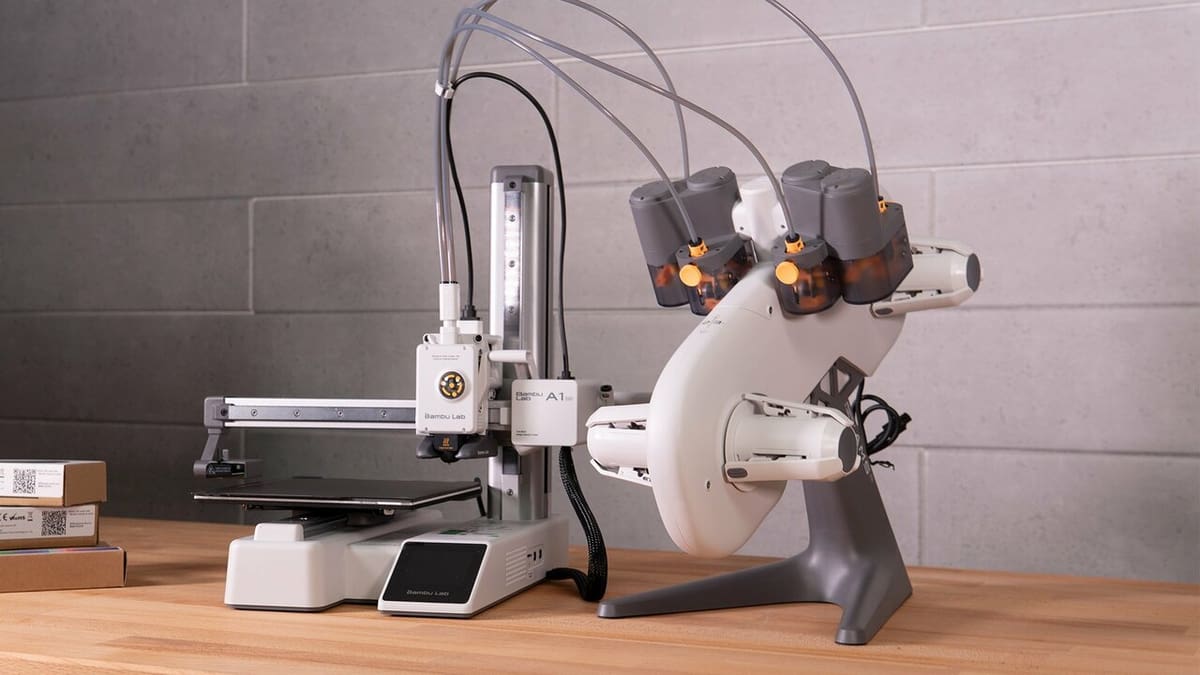
The Bambu Lab A1 mini is not a system pitched at kids and does not come with a curated library of ready-to-go toys. That should be a dealbreaker for a guide about printers you can make toys with, but with the Toybox and X-Maker offering so comprehensively covering the one-click side of things, we felt the need to suggest a more advanced system for bigger kids that can cover growing ambitions with their printing.
The A1 mini offers the largest build volume on this list, 180 x 180 x 180 mm, and is a thoroughly modern desktop 3D printing experience. If you’re willing to invest additional parental supervision in curating your own collection of models (or designing your own with the children), this printer handles the rest, achieving high-quality prints with ease. Calibration is automatic, and, in many cases, you can print directly from the accompanying app, Bambu Handy.
Its companion, the AMS lite (automatic material system), powers the A1 mini up with the ability to print four colors in a single print. For decorative models or more complex toy prints that are a little truer to life, this is a great feature to have. And, possibly best of all, you’re not locked into using specific or pricey materials, provided the spool you have fits on the AMS lite’s drum-style spool holders.
It is a large step removed from the one-click printing and tightly focused toy-based offering by the Toybox and X-Maker, above, but as the baseline 3D printer for bigger kids and young children with parents that are keenly interested in getting to grips with 3D printing, too, the A1 mini and AMS lite is the combo to beat.

Beyond the three printers highlighted above, we tested more 3D printers, from the inexpensive toy-oriented, to simplified grown-up printers that pitch to make printing childs’ play.
The AnkerMake M5C impressed us greatly and, much like the Bambu Lab A1 mini, is a “full” 3D printer designed for general-purpose 3D printing rather than specifically for toys. It has an app-forward user experience that would be comfortable for older kids. The print quality is exceptionally good, and in typical AnkerMake fashion, it’s quick, too.
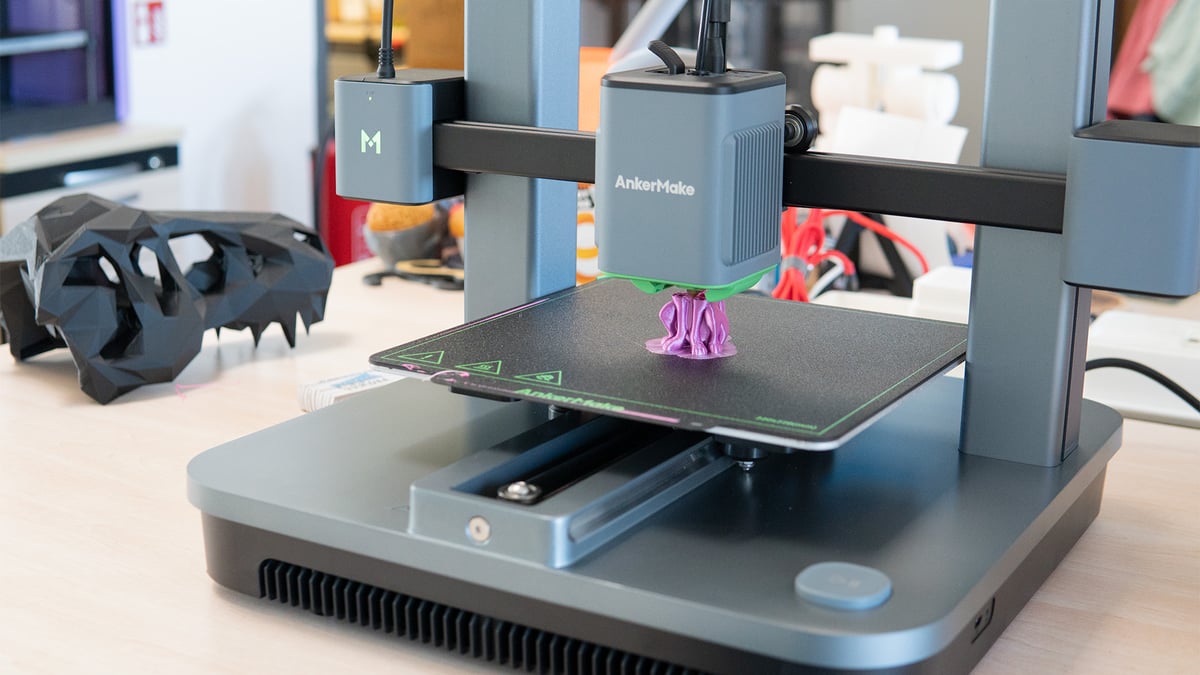
Operation via the app is snappy, and you can tap some 70 AnkerMake-provided models or draw on the vast Printables 3D model library for things to print. We wouldn’t let kids loose on the latter unsupervised (some inappropriate models can be found), but being able to “download” a model directly to the printer, with all the print preparation handled in the background – no computer required – is rad.
We found the Wi-Fi connection to be inconsistent, though, with the printer frequently losing connection and, consequently, the convenience of printing via the app with it.
Also making it to our testing table for this round was the Kokoni EC1 and EC2, which we’ll cover in one broad stroke since the two are only really separated by minor differences. These compact printers both offered solid printing performance backed up by an incredibly responsive app.
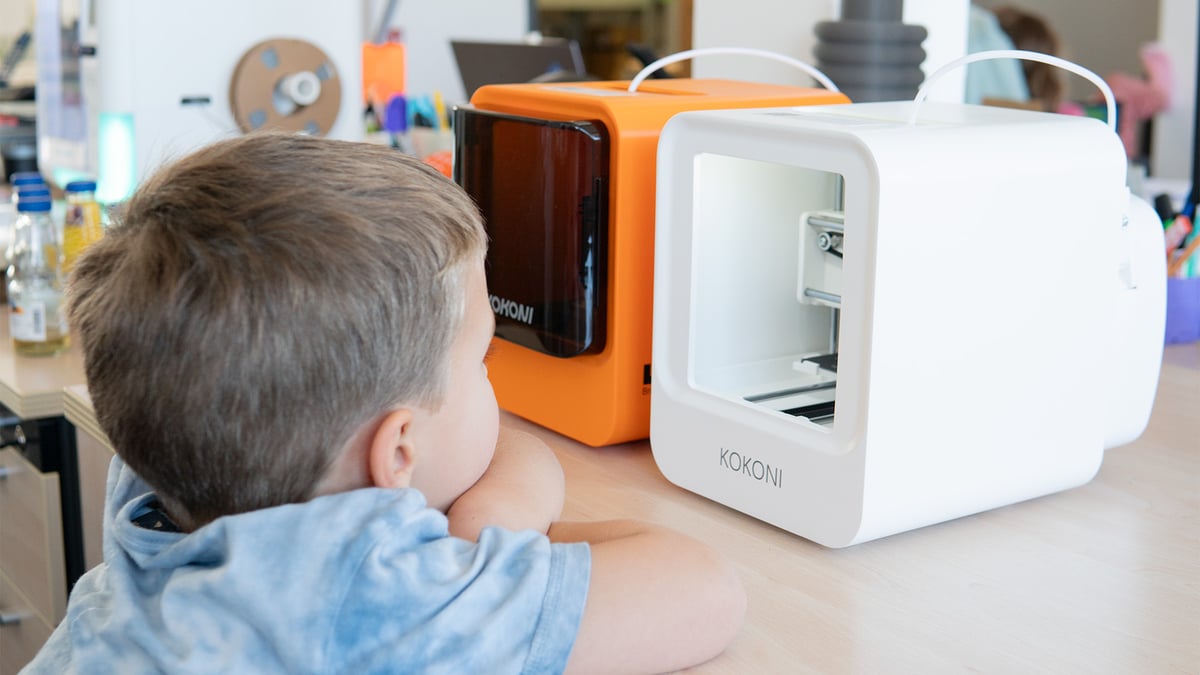
Unique creation tools powered by “AI” let you create printable models from photographs to varying degrees of success. You can also sketch loose shapes according to a limited category set, and the app will magically turn them into models. They’re not great, which is a shame considering the broad model library and responsiveness of the app itself. It’s really quite nice and puts more capable 3D printers’ apps to shame. The EC2 is available in a set of snazzy pastel color shells, which we like, but higher price tags ($299 and $349, respectively) and the need for cumbersome, pricey filament cartridges let down what would be an otherwise easy recommendation.
Over time, we’ll log changes to this article here.
If there’s one thing that testing a lot of 3D printers has taught us, it’s that maintaining a broad benchmarking scheme for 3D printers is impractical for getting a sense of what a 3D printer is like to use and live with. Holding a sub-$200 self-assembled printer for hobbyists to the standard of a $6,000 production machine designed to handle engineering-grade materials won’t tell you that the former is a breeze to set up and the latter a tangled web of firmware updates, buggy systems, and unreliable performance.
We want our reviews and buyer’s guides to cut straight to the chase. What is it like to use a printer? What are the defining features like? What didn’t we like? And, more importantly, is it worth the money? We don’t want to get bogged down benchmarking numbers out of context or hung up on issues affected by more variables than we can control.
Our buyer’s guides and reviews take the intended end user of a 3D printer into consideration. We imagine what they’re likely to do with it and focus the testing on challenging this. If we have a large-volume printer, for example, we’ll be printing – surprise, surprise – large prints, making use of the entire bed, and checking the performance at the limits of Z-height.
Other points of consideration for what makes the best 3D printer include ease of use, supporting software, and repair options. If something goes wrong, how easy is it to fix the machine? Does the documentation or customer service provide adequate information?
We strive to answer all these questions and more in our quest to find the best 3D printer for you.
Trust is important to All3DP, so our product testing policy is strict. When sourcing test units from a manufacturer, we do so under a zero guarantees policy. We make no guarantee of coverage in exchange for the printer, and the first time a manufacturer sees what we think is when we publish the content.
If a manufacturer doesn’t reclaim the unit after testing is complete, it is donated to a local cause or goes into deep storage for responsible disposal later. We occasionally buy machines for testing, too. In such cases, machines purchased by All3DP either remain in the office for team usage or are donated or disposed of in the manner described above.
Manufacturers or benefactors donating units for review do not influence the outcome or content of the reviews we produce. To the best of our ability, we will investigate abnormal issues with the manufacturer to glean better context or get insight into their awareness of the problem. But we make no excuses for poor design or bad QA.
One method we monetize our content at no additional cost to the reader is through affiliate product links. If you click on a shopping link featured in our buyer’s guides and reviews, we may receive a small commission from the store if make a purchase. This is at no additional cost to you. For more meaty content policy details, we cover it all in the advertising and commercial activities section of our terms of use.
For most readers, our top recommended 3D printers are your best bet in a given category.
But, facing the fact that there is no one-size-fits-all solution to home 3D printing, we’re here to help. Here are some pointers to orient you in this terminologically dense but wonderful world. (A word on terminology, we have a handy glossary of terms to know at to bottom of this article.)
Many 3D printers pitched for “beginners” or children go to such lengths to baby the user that they quickly become claustrophobic experiences. You will encounter more limitations than possibilities as your experience grows. If you aren’t satisfied with a “beginner” 3D printer’s features, we’d recommend a budget pick instead. You’ll save a little money, and the opportunity to learn by doing is far greater. And if something goes wrong, there are giant tribes online for each printer that have already asked and answered every question under the sun.
While the general quality of budget 3D printers has dramatically improved in recent years, quality control is often lacking. While manufacturers with large user bases are adapting to meet the demands of their newfound fans, including better customer support, there are usually better wells of knowledge to be found in the owners themselves, who contribute to the vast forum knowledge bases for some 3D printers.
We have zero obligation to manufacturers to sugarcoat what we find, and the first time they read it is when you do too. That’s why you can trust our reviews. We don’t pander to anyone, and our experience with the printer is what you read on the page.
If you can’t find any information about a printer you’d like to know more about, let us know at editors@all3dp.com.
A 3D printer for the home is rarely ever a one-and-done investment. Besides the continual purchase of materials, maintenance costs on perishable printer parts can stack up – think nozzles on an FDM printer or FEP film on an MSLA machine. Of course, parts can wear down or break, too, meaning sourcing replacement parts is a sensible consideration if you plan to print long-term. Printers with roots in the RepRap movement and open-source designs will be easiest to source parts for, with off-the-shelf components part and parcel of the design ethos behind them. Enclosed-design printers aimed at beginners may offer the gentlest introduction to printing, but your options to source spare parts will often be limited to the manufacturer. That’s if you can even get to and diagnose the problem.
The thrill of a new hobby will only sustain you so far. Being the desktopification of an otherwise complicated manufacturing process, expect to encounter, sooner or later, problems with a home 3D printer – even the occasional show-stopping issue. Having an end goal in mind for your printing gives you purpose and a reason to learn the solutions to the problems. Printing simply because it looks cool will result in a small mountain of useless doodads and, eventually, disinterest at the hands of cost, frustration, and the buildup of useless plastic trash.
Most home 3D printers are single extrusion fused deposition modeling machines, meaning a single printable material extruded through a single nozzle. Versatile enough for many applications through material compatibility, they’re safe machines to start with. But if you know you need to print objects with challenging geometries or semi-enclosed volumes, a dual extrusion printer would make your printing far easier. Likewise, single objects that need to have different material properties will only be achievable with dual extrusion. A resin printer will be the way to go for high-detail miniatures. Understand the technologies to find a printer that best suits your needs.
While the size of FDM 3D printers can vary greatly, the spillover is small. You’ll get some emissions from the filament melting, cloying the air, making it inadvisable to spend prolonged periods nearby. Generally speaking, the cleanup is minor and relatively easy to contain, depending on the models you print.
Resin 3D printing, however, is dramatically different and has unique demands that should make you think twice before investing. To varying degrees, the resin is smelly and toxic to you and the environment. It requires dedicated cleanup stations and personal protective equipment. You typically need 95 %+ isopropanol to clean prints and dissolve uncured resin from surfaces.
All printers should be operated in well-ventilated spaces, but this applies doubly to resin 3D printers.
While many excellent 3D printers have gotten their big break on Kickstarter, there’s the unavoidable issue that the platform is not a store. You are not buying a printer when you commit money to a campaign on Kickstarter; you are backing a vision. It’s putting money into the pot to help a company or person trying to achieve something.
You get nothing in return if a project is grossly mishandled and the money disappears. Often what you do get is the beta version of the product. You are paying for early access and all the wrinkles across all stages of the product that come with it.
We’re seeing more big-name companies turning to Kickstarter than ever to launch their products – it’s a safe way for them to gauge demand and drum up some interest against the pressure of a ticking countdown. Despite many companies being capable of outright launching products, they go cap-in-hand to enthusiasts with the promise of shiny new tech. Don’t be that user unless you absolutely must be the first to use a product and have money you can afford to lose.
We don’t think it’s worth the risk, but in the interest of cool new tech, report on new campaigns with our news coverage. You will never see a Kickstarter 3D printer in our buyer’s guides unless it has completed its campaign and the printer is widely available at retail, with all the protections that come with buying from a store.
Choosing the best 3D printer is tricky, not least because the terminology surrounding 3D printing is dense. Here are some need-to-know terms, their explanations, and useful links to help you on your way to 3D printing mastery.
FDM: Fused deposition modeling, otherwise known as FDM, is a 3D printing process that extrudes heated thermoplastic material through a moving nozzle to build an object layer by layer. FDM is a trademarked term, which led to the RepRap open-source movement to coin the alternative phrase “fused filament fabrication” (FFF), but the two are interchangeable.
Filament: Filament is the base material used to 3D print objects via FDM. The filament is typically a solid thermoplastic fed to a print head, heated to its melting point, and extruded through a small nozzle. Filament is commonly available in spools of either 1.75 mm, 2.85 mm, or 3 mm diameter widths – dimensions that dictate the printers that can use them.
G-Code: G-code is the machine language used to instruct computerized tools such as 3D printers. Giving coordinates and instructions for tool heads and other non-movement functions, it is almost exclusively generated by slicing software. It comprises a library of commands to control specific actions like motion, speed, rotation, depth, and other related switches and sensors used in a machine’s operation. You can get to grips with G-code in no time with our guide to G-code commands.
Heated bed: This is a build plate that is heated so that the few layers of extruded plastic are prevented from cooling too quickly and then warping. A heated bed is essential for working with ABS or PETG materials but not so much with PLA.
Hot end: This is the cluster of components that heat and melt the plastic for deposition through the nozzle.
Extruder: Used by some to describe the entire system of parts that pushes and melts filament, extruder can also refer specifically to the motor and accompanying gears that grip the filament, feeding it to the hot end. How the extruder is arranged can affect the printer and its capabilities. There are two common arrangements: Bowden and direct. It’s a messy subject with overlapping terms and technical explanations; our guide to 3D printer extruders gives you all the knowledge to make sense of it.
Bowden: A style of extruder that sees the extruder motor positioned away from the hot end – typically the structural frame of the printer or on one end of the X-axis gantry. So-called for the Bowden cable and its action of allowing a wire to move freely within tightly constraining tubing, the Bowden extruder feeds filament through a PTFE tube directly into the hot end.
Direct Extruder: The other commonly seen extruder type, a direct extruder sees the extruder motor and associated feeding mechanism mounted directly to the hot end, with barely any distance between the feed and the melt zone of the hot end.
Dual Extrusion: Some 3D printers carry two extruders/hot ends, allowing them to incorporate multiple colors or materials into the same print job. While the obvious appeal comes from the possibility for decorative two-tone prints, the real benefit of dual extrusion systems is combining different materials, such as dissolvable support material, to enable the printing of otherwise impossible geometries. It’s a deep topic worth exploring more in our guide to all you need to know about dual extrusion.
PLA: Polylactic Acid, otherwise known as PLA, is a thermoplastic commonly used as a material for printing with FDM 3D printers. It’s easy to work with and is available in many colors and finishes. PLA is somewhat brittle – don’t expect to print strong items with it – but it remains popular for decorative printing thanks to its low cost. You can learn more about PLA in our guide dedicated to the topic.
SLA: Stereolithography is a 3D printing technology that falls under the broader process of vat photopolymerization. The term is often (incorrectly) used to describe all methods of vat polymerization – really, it’s a particular technology that uses a directed laser beam to trace layers into a vat of liquid photopolymer resin. Alongside SLA, other technologies are considered vat polymerization.
Resin: The material used in desktop SLA, DLP, and LCD (MSLA) 3D printers. A blend of chemicals that includes a photoinitiator, resin solidifies under ultraviolet light. Highly toxic and difficult to clean up after a spill, care, attention, and personal protective equipment are musts when working with resin. It is an unpleasant material, and wastage must be disposed of in accordance with local laws. Despite all the warnings, it’s the only way to go for intricate detail.
LCD 3D Printer: A common term for resin 3D printers that use an LCD as a layer mask over UV light. The de facto standard in inexpensive resin 3D printers, the technology is cheap and widely used. The LCD panels are consumable, though, with monochrome LCDs typically having lifespans in the low 1,000s of hours.
MSLA: Mask stereolithography (MSLA) is a term coined by Structo but popularized by Prusa Research. It refers to, basically, the LCD 3D printer as described above.
Micron: One-thousandth of a millimeter. This unit of measurement is commonly used in 3D printing as a value to indicate accuracy, resolution, or surface finish.
Slicer: 3D printing works by building an object layer by layer. A slicer is a program that divides a 3D model into flat layers and generates the machine code for the printer to trace out said layers. The output of a slicer for FDM 3D printers is typically G-code, which gives instructions and coordinates for the printer to execute. Our deep dive explaining what exactly a slicer is gives good foundational knowledge. Many popular slicers are free and open source. Others are proprietary and machine-specific. It’s an essential tool for successful 3D printing.
STL: STL is the most popular file format for 3D printing. Developed by 3D Systems in the ’80s, the STL file type only contains the surface geometry of a 3D object. Despite industry efforts to move onto more efficient and data-rich formats such as 3mf, STL endures and is the most commonly found 3D model file type on popular 3D model file repositories. We explain in more detail in our guide to what exactly STL is.
Open Source: The term given to a product, typically software, but also applicable to hardware that is freely open for others to modify and redistribute according to their needs. In 3D printing, this is often in the spirit that individuals are free to modify, improve, and share changes to the source material for others to test, iterate, and reciprocate. Open source licenses govern the fair and correct usage of open source works, giving terms and conditions that ensure the freedom of access to the creation and any derivatives.
RepRap: A project started in 2005 by Dr. Adrian Bowyer, a mechanical engineering lecturer at the University of Bath. Created to develop a replicating rapid prototype, a low-cost machine capable of printing replacement parts for itself or other new machines. The vast majority of desktop 3D printers stem from the work laid down by the RepRap project. We have a fascinating alternative RepRap Wiki page on the topic if you want to dig deeper.
License: The text of "The Best Toy 3D Printers" by All3DP is licensed under a Creative Commons Attribution 4.0 International License.
CERTAIN CONTENT THAT APPEARS ON THIS SITE COMES FROM AMAZON. THIS CONTENT IS PROVIDED ‘AS IS’ AND IS SUBJECT TO CHANGE OR REMOVAL AT ANY TIME.